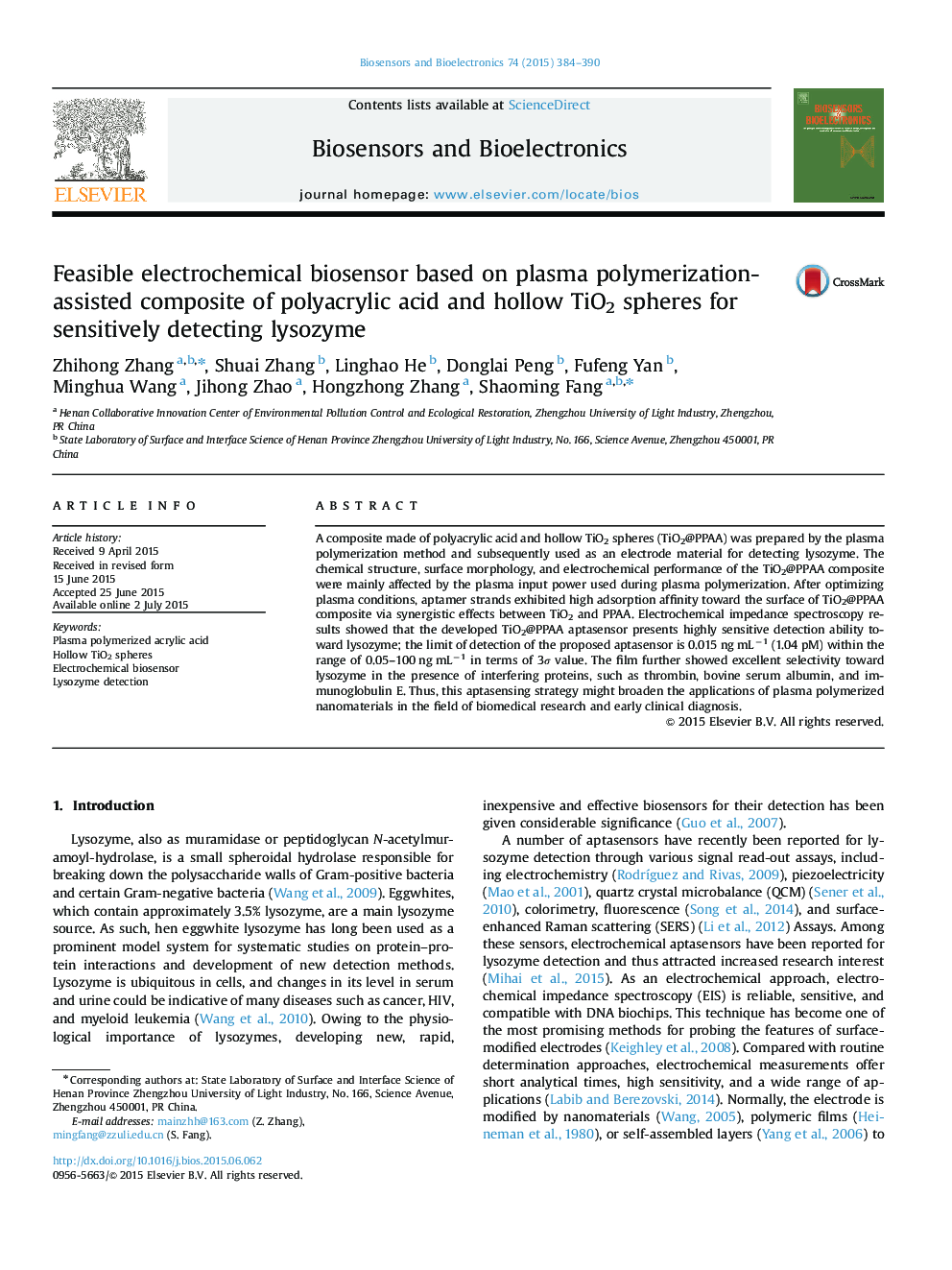| Article ID | Journal | Published Year | Pages | File Type |
|---|---|---|---|---|
| 7231783 | Biosensors and Bioelectronics | 2015 | 7 Pages |
Abstract
A composite made of polyacrylic acid and hollow TiO2 spheres (TiO2@PPAA) was prepared by the plasma polymerization method and subsequently used as an electrode material for detecting lysozyme. The chemical structure, surface morphology, and electrochemical performance of the TiO2@PPAA composite were mainly affected by the plasma input power used during plasma polymerization. After optimizing plasma conditions, aptamer strands exhibited high adsorption affinity toward the surface of TiO2@PPAA composite via synergistic effects between TiO2 and PPAA. Electrochemical impedance spectroscopy results showed that the developed TiO2@PPAA aptasensor presents highly sensitive detection ability toward lysozyme; the limit of detection of the proposed aptasensor is 0.015 ng mLâ1 (1.04 pM) within the range of 0.05-100 ng mLâ1 in terms of 3Ï value. The film further showed excellent selectivity toward lysozyme in the presence of interfering proteins, such as thrombin, bovine serum albumin, and immunoglobulin E. Thus, this aptasensing strategy might broaden the applications of plasma polymerized nanomaterials in the field of biomedical research and early clinical diagnosis.
Related Topics
Physical Sciences and Engineering
Chemistry
Analytical Chemistry
Authors
Zhihong Zhang, Shuai Zhang, Linghao He, Donglai Peng, Fufeng Yan, Minghua Wang, Jihong Zhao, Hongzhong Zhang, Shaoming Fang,
